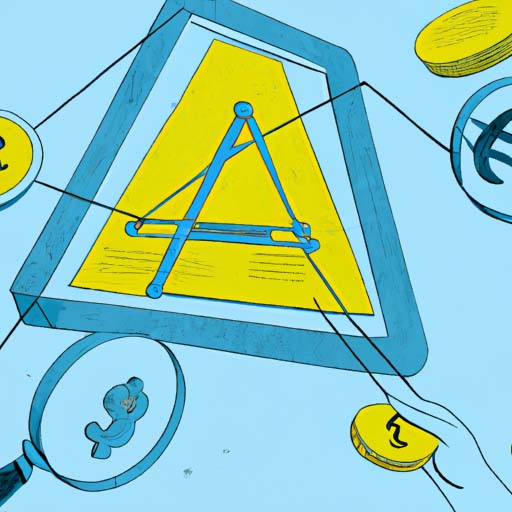TLDR:
Nature underpins around half of the world’s GDP – but it’s under real threat. Human activities, including intense water use, are harming the planet’s biodiversity. Investors are betting big on startups that make it easier to measure and track biodiversity.
Nature underpins much of the global economy – but it’s under threat. Investors are piling into startups that protect biodiversity in 2024. Over half of the world’s GDP – around $44 trillion – relies on nature and its services, according to a 2020 paper from the World Economic Forum. The global economy relies heavily on nature and its resources, and the loss of biodiversity can have significant consequences. Startups that focus on measuring and tracking biodiversity are attracting investment as investors recognize the importance of addressing this issue. There is a significant need for tools that effectively measure and report biodiversity, as well as a need for universal metrics for tracking and managing biodiversity data. Legislation is already being put in place in some countries to require financial institutions and corporations to monitor and report their impact on biodiversity. Overall, there is growing recognition of the importance of biodiversity and a need for innovative solutions to protect and restore it.
Key Points:
- Nature underpins around half of the world’s GDP
- Investors are betting big on startups protecting biodiversity
- There is a need for tools to measure and track biodiversity
- Biodiversity loss has gained attention on public, regulatory, and corporate agendas
- Legislation is being put in place to require monitoring and reporting of impact on biodiversity
Nature underpins around half of the world’s GDP – but it’s under real threat. Human activities, including intense water use, are harming the planet’s biodiversity. Investors are betting big on startups that make it easier to measure and track biodiversity. The world is going through a mass extinction event. Swathes of biodiversity in the form of bacteria, plants, and animals are being wiped from the Earth in part thanks to mankind’s use of the planet, experts say. But there is a concerted effort to prevent, or at least slow, this widespread biodiversity loss and protect nature’s resources. “The problem is very clearly identified. We know there is no point talking about stopping the climate crisis without addressing biodiversity,” Agate Freimane, general partner at impact venture capital fund Norrsken, told Business Insider. Depleted biodiversity impacts nature’s ability to purify water, clean air, and fertilize crops, which businesses and people depend on. In addition, there’s quite a substantial business case behind addressing the crisis consuming biodiversity. Over half of the world’s GDP – around $44 trillion – relies on nature and its services, according to a 2020 paper from the World Economic Forum. At the same time, “everyone’s realizing that it’s an incredibly difficult nut to crack,” said Siobhian Brewster, a partner at impact fund Aenu. Investors told BI that tools that effectively price, measure, and report biodiversity are lacking, but climate reporting has laid the groundwork. Biodiversity loss has ranked higher on public, regulatory, and corporate agendas in recent years, gaining momentum alongside the intertwined climate crisis. The 2022 COP15 biodiversity summit marked a pivotal moment when a landmark Global Biodiversity Framework was devised with a demand for $200 billion in investment per year by 2030.
Biodiversity reporting relies on having accurate underlying data. Assessments involve repeated manual tasks, tracking the biggest animals to the smallest microbes in local parks, underwater, and at potential housing sites. “You’re taking a snapshot of what you see and hear at a certain point in time,” said Zoe Balmforth, the cofounder of Pivotal, a biodiversity data and analytics startup. “And then you’re doing it again, for example, a year later, and then again a year later and comparing between them. So statistically, within that, you will see change.” Collecting local data is expensive and difficult, and the companies who need it don’t know how to do it, according to Piort Bukański, senior investment associate at Beringea. As such, startups will try to fill that gap, he said.
Globally, funding rounds in startups tackling biodiversity loss have ticked up steadily since 2018, peaking at 69 last year, per PitchBook data. The value of those investments has been more uneven. Venture capitalists pumped a record $463 million into the nascent sector in 2022, following on from rapid increases in preceding years. That investment, however, was cut in half to $212 million last year. Early movers in the industry have adopted an array of different approaches to biodiversity loss. Venture capital-backed startups like Pivotal, Basecamp Research, Nature Metrics, and Dendra Systems span everything from biodiversity knowledge graphs to using drones and AI for land restoration and seed planting. Meanwhile, new and existing tools aim to help others track and report their impact – which is the second piece of the puzzle. For example, French carbon management company Sweep has set its sights on becoming an all-in-one platform for monitoring sustainability data, including biodiversity. “Finding universal metrics for tracking and managing data such as impact on ecosystems won’t be easy,” said Rachel Delacour, the Sweep CEO.
In France, legislation already sets out requirements for financial institutions to monitor, report, and reduce their impact on biodiversity. “It’s an example of how it can look for the rest of Europe,” Bukański said. The Taskforce on Nature-Related Financial Disclosure released its voluntary frameworks last year, outlining how corporations and financial institutions should report their impact, while the EU Deforestation Regulation came into force, influencing corporate supply chain accountability. Requirements also emerged in England, where urban developers must positively impact biodiversity. It has kicked off a statutory biodiversity credit market for when such gains are unattainable, though credits must be a last resort. Broader biodiversity credits have long been touted as a way to fund nature, akin to the carbon market where credits representing one metric ton of CO2 removed from or prevented from entering the atmosphere can be bought to offset emissions. The concept has intrigued investors like Norrsken’s Freimane, who seek huge problems and addressable markets for potential investments to yield bigger returns and impact. At this stage, it’s unclear where the real opportunities lie, and more business model innovation is needed, Freimane said.






